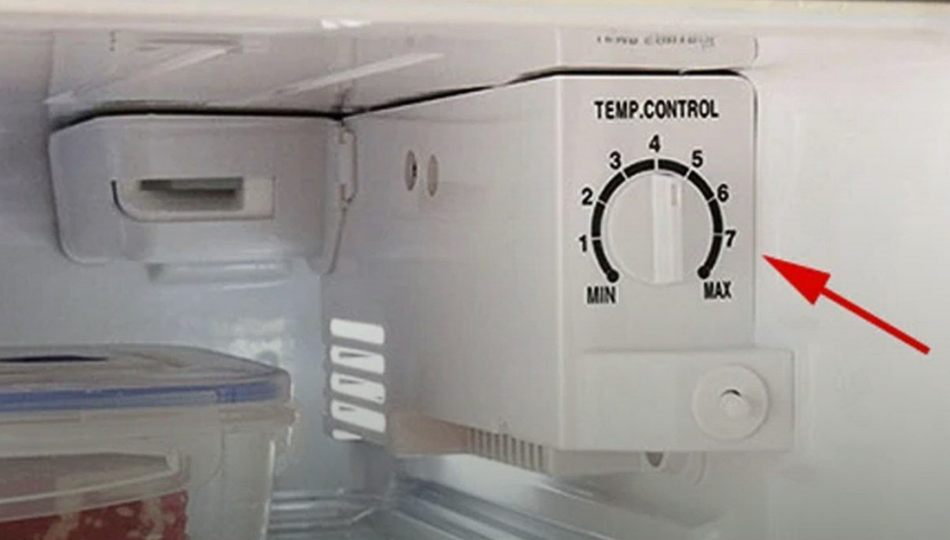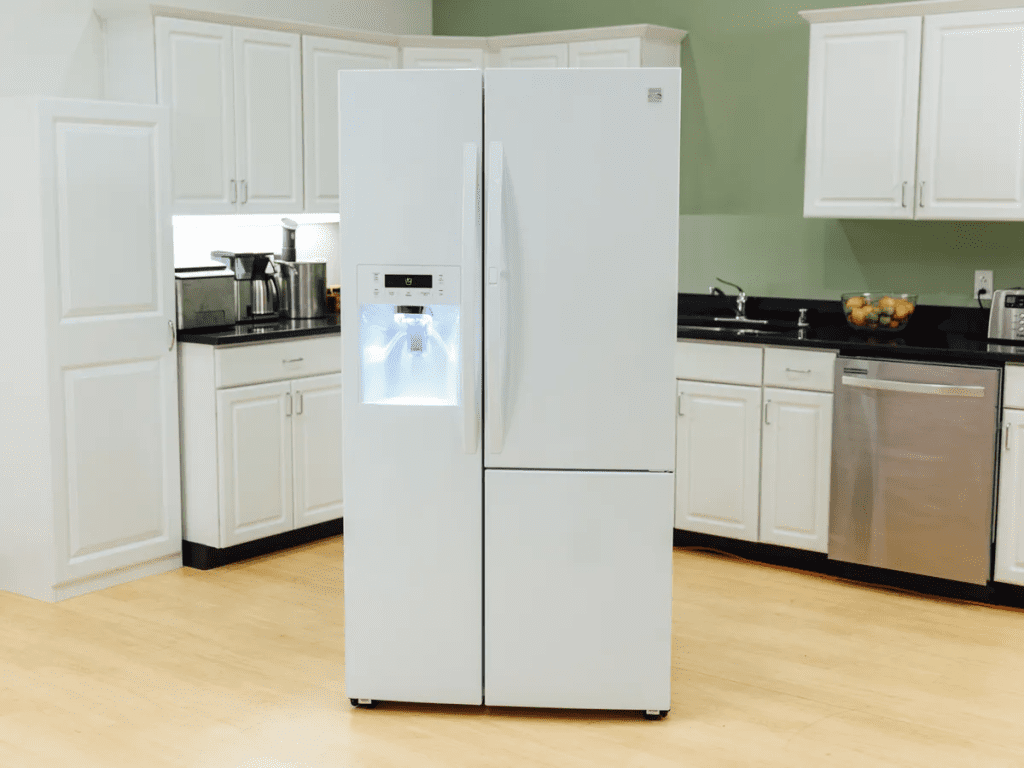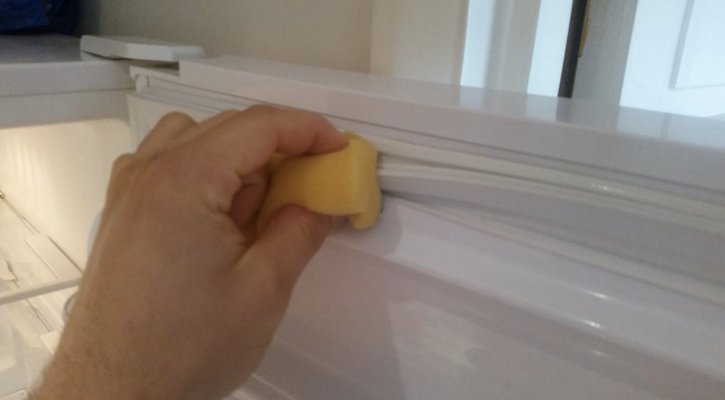If you’re looking for ways to cut down on electricity costs, the solution might be right in your kitchen. While upgrading to energy-efficient appliances and turning off lights is effective, there’s a little-known trick that could yield surprising results: a hidden button on many refrigerators that, when activated, optimizes energy use. This seemingly small adjustment can help reduce household energy consumption significantly, saving millions in electricity bills worldwide.
What Is the Hidden Button?

The secret to this energy-saving trick is what’s often labeled as the “energy saver” or “eco mode” button. This button can be found in various models of modern refrigerators, but it’s often overlooked or unknown to many users. When activated, it adjusts certain functions to optimize the refrigerator’s efficiency, which means it uses less electricity without compromising on food safety or performance.
However, because manufacturers don’t always highlight this feature, and it’s rarely discussed in user manuals, most people remain unaware of its existence or benefits.
How Does the Energy Saver Button Work?
Refrigerators are among the biggest energy consumers in the home, as they operate continuously to maintain a stable temperature for food preservation. The energy saver button makes subtle adjustments to the refrigerator’s internal operations, which, over time, can add up to substantial energy savings. Here’s how it works:
1. Defrost Cycle Management
One of the main functions of a refrigerator is to prevent ice buildup by automatically defrosting. This defrost cycle, while necessary, can consume a lot of energy. When you activate the energy saver mode, the refrigerator can adjust the frequency of these defrost cycles, extending the intervals between them. This adjustment reduces the number of times the defrost system is activated, saving energy while still maintaining proper cooling.
2. Adjustments to Temperature Control
The energy saver button can also make slight changes to the refrigerator and freezer temperature settings. For instance, it might increase the internal temperature by just a degree or two. While this adjustment is minimal and won’t affect the freshness of your food, it can decrease the workload on the cooling system. By requiring less energy to maintain slightly warmer temperatures, your refrigerator can operate more efficiently.
3. Deactivating Door Heaters
Many refrigerators come equipped with door heaters to prevent condensation from forming on the exterior surfaces, especially in humid environments. However, in low-humidity areas, these heaters are unnecessary. The energy saver mode can disable these heaters, reducing power consumption without compromising the appliance’s performance.
Why This Hidden Button Could Make a Big Difference
Using this button might sound like a small change, but considering the refrigerator’s continuous operation, the potential savings can be significant. If more people start using the energy saver button, we could collectively reduce household electricity consumption by a substantial amount. In fact, a household could save between 5% and 10% on their refrigerator’s energy costs just by using this feature.
Global Impact of Using the Energy Saver Button

Let’s put this into perspective: imagine millions of refrigerators around the world each reducing their energy usage by a small percentage. The cumulative effect could be enough to make a noticeable dent in energy demand, which has environmental and economic benefits. Lowering the demand on power grids can contribute to reduced greenhouse gas emissions and help combat climate change, all from a small, simple action.
Where to Find the Energy Saver Button on Your Refrigerator
Not all refrigerators have an energy saver button, but many do, especially newer models. The button is typically located on the control panel inside the fridge or near the temperature adjustment settings. It may be labeled as “Energy Saver,” “Eco Mode,” or something similar.
If you’re unsure whether your refrigerator has this feature, check the user manual, or look up the model online to explore its specific energy-saving options. Even if your model doesn’t have an energy saver button, there may be other ways to adjust its settings to reduce energy usage, such as manually raising the temperature by a degree or two.
Additional Tips to Maximize Refrigerator Efficiency

In addition to using the energy saver button, there are other practices you can follow to ensure your refrigerator runs efficiently:
1. Keep the Coils Clean
The condenser coils, located at the back or bottom of the refrigerator, can become covered with dust over time. Dirty coils make the fridge work harder, consuming more energy. Clean these coils every six months to keep your appliance running smoothly.
2. Avoid Overloading the Refrigerator
While it’s good to keep your fridge relatively full, overloading it can reduce airflow, making it harder for the refrigerator to maintain consistent temperatures. An overloaded fridge requires more energy to cool, so keep it organized and avoid overcrowding.
3. Set the Right Temperature
The ideal refrigerator temperature is between 37°F and 40°F, while the freezer should be set at 0°F. Keeping the fridge too cold wastes energy, and these recommended settings will ensure your food stays fresh without using more electricity than necessary.
4. Keep the Door Closed as Much as Possible
Frequent opening and closing of the refrigerator door lets cold air escape, forcing the fridge to work harder to maintain its temperature. Try to minimize how often you open the door, and don’t leave it open for long periods.
5. Check the Door Seals

Worn or damaged seals can allow cold air to escape, making the refrigerator work harder. Test the seals by placing a piece of paper between the door and the fridge; if you can pull it out easily, it’s time to replace the seals.
Why Energy Efficiency Matters Now More Than Ever
As energy costs rise and the effects of climate change become increasingly apparent, making small changes in our daily lives is essential. Optimizing your refrigerator’s efficiency not only helps lower your electricity bill but also reduces the strain on the environment.
Imagine the ripple effect if millions of people worldwide activated this hidden energy-saving feature. With a simple button press, we could save significant amounts of energy, reduce our collective carbon footprint, and help protect the planet.
Conclusion: A Small Change with Big Potential
The energy saver button on your refrigerator might be small, but its impact can be enormous. By reducing your fridge’s energy consumption, you’re not just saving on electricity costs—you’re also taking a step toward a more sustainable lifestyle. And if every household made this one change, the potential global impact could be truly remarkable. So, go ahead, locate that hidden button, and activate it. Your wallet—and the planet—will thank you.


